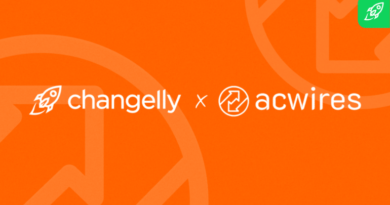Spot Trading in Crypto: A Simple Guide for Beginners
What is spot trading in crypto, and why is it the go-to method for millions of first-time investors? In simple terms, it’s the direct buying and selling of cryptocurrencies at current market prices. You’re not speculating on future prices or using leverage. You just pay, receive your crypto, and hold it.
This guide explains everything you need to know to get started with spot trades confidently.
What Is Crypto Spot Trading?
Crypto spot trading is the process of buying or selling digital assets like Bitcoin or Ethereum for immediate settlement. You pay the current market price and receive the cryptocurrency right away—no waiting, no future contracts. It’s the most popular way for people to enter crypto.
Spot trading is often a cryptocurrency purchase, or a Fiat-to-Crypto (F2C) entry point. You use traditional money to buy real crypto, making it the main ramp into the ecosystem.
It’s a core part of many trading strategies—and the foundation for long-term investing, akaor HODLing. It works similarly to foreign exchange markets, where traders exchange one currency for another on the spot. The key idea is immediate purchase and direct ownership. You buy, you get the coin—simple as that.
Because you’re trading actual crypto (not a contract), you’re directly exposed to asset prices. Gains or losses come from price changes after the trade.

The Importance of Understanding Spot Trading for Beginners
In the crypto market, the spot market gives you hands-on experience with real crypto ownership. Each spot trade creates a record on the blockchain—a public ledger that tracks all immediate transactions.
When you place a spot order, you enter details like the asset, amount, and your wallet address. Once confirmed, the transaction is permanent and irreversible. That’s why beginners must understand how spot trading works. It teaches the basics of blockchain use, safe asset handling, and how to interact with exchanges the right way.
How Spot Trading Works in Crypto
Spot trading in crypto is simple and direct. You buy or sell a cryptocurrency at its current market price and take ownership immediately. Here’s how the process works:
Selecting a crypto asset
Start by choosing the coin or token you want to trade—Bitcoin, Ethereum, or any other listed asset.
Viewing the current market price
Check the live trading chart. Prices update in real time based on supply and demand.
Placing a buy or sell order
Enter the amount you want to buy or sell. You can place a market order for instant execution or a limit order to set your own price.
Confirming the transaction
After reviewing the details, submit your order. Once it’s matched, the trade is final.
Trade Finalization
Your exchange wallet receives the crypto. You now fully own the asset and can transfer it to a private wallet, hold it, or trade it later.
Spot Markets and Spot Price
There are two terms often mentioned in beginner crypto trading—spot market and spot price. A spot market is where traders buy and sell crypto for instant settlement, typically on a cryptocurrency exchange. These trades are executed immediately at the current price, known as the spot price.
The spot price reflects live market dynamics and reacts to short term price movements. To keep the market liquid and efficient, market makers continuously provide buy and sell offers.
Spot markets are direct and easy to understand. You see the price, click buy or sell, and the crypto is yours—it’s basically just a straightforward exchange.
Types of Crypto Spot Orders
When trading on a spot market, you can place different types of orders depending on your goals. The two most common order types are market orders and limit orders.
Market order: buy/sell instantly at the current price
A market order is the fastest and simplest way to trade. Spot trading refers to the immediate delivery of crypto after a buy or sell order is placed. You accept the current market price and get the asset right away. This is useful when speed matters more than price, like reacting to breaking news.
However, in fast-moving markets, the final price you get may differ slightly due to slippage. Still, for most beginners, it’s a reliable way to enter or exit a position instantly.
Limit order: set your price and wait
A limit order gives you more control. You choose a predetermined price at which you want to buy or sell. The trade only goes through if the market reaches that point. For example, you can set a higher price to sell Bitcoin later or buy it cheaper during a dip.
Limit orders are ideal for traders with patience. They allow you to take advantage of market trends and set goals based on expected crypto asset movements. Unlike market orders, you might have to wait—but you get the price you want in the end.

Advantages of Crypto Spot Trading
Crypto spot trading offers a clear and simple way to enter the market. Unlike derivatives or leveraged trading methods, you deal with the actual asset. When you buy Bitcoin, you own Bitcoin. That’s what makes it attractive to beginners and long-term holders alike.
One of the biggest advantages is immediate settlement. Trades are finalized quickly, and the crypto lands in your wallet. No waiting on contract expirations or margin requirements. You know exactly what you own, at what price.
Spot markets also offer high liquidity on popular pairs. This means fast execution and tighter spreads, which reduces cost and slippage. It’s ideal for anyone building a portfolio over time.
Compared to other trading methods, spot trading is more transparent and less stressful. There are no funding rates, no liquidations, and no margin calls. You’re only risking what you invest.
Also read: What is crypto swing trading?
Disadvantages of Crypto Spot Trading
Crypto spot trading is simple and beginner-friendly, but it has several drawbacks traders should understand upfront. In short, crypto spot trading offers clarity and ownership—but lacks the flexibility, upside potential, and defensive tools that other trading methods provide.
1. Full exposure to price movements
In spot trading, you hold the actual digital assets, which means your portfolio’s value rises and falls with the market. If prices drop, you bear the loss—unless you choose to hold through the dip. This becomes risky in volatile markets with sudden shifts.
2. Limited strategy options
Spot traders can’t easily profit from price declines. There’s no option to short-sell within spot markets. The only workaround is selling assets for stablecoins or fiat. This limits your ability to act on bearish market trends.
However, many crypto exchanges now allow users to simulate short-selling by borrowing assets through margin features and selling them on the spot market. Platforms like Binance, Kraken, and KuCoin make this possible—but it’s technically margin trading layered on top of spot.
3. Capital requirements
Spot trades require full payment. You must fund the trade 100%, with no leverage. If you want to buy $2,000 of ETH, you need $2,000 in your account. That makes spot trading more capital-intensive and can feel limiting—especially during bullish runs or when entry prices rise fast.
4. Liquidity concerns
In lower-volume tokens, trading volume can affect execution quality. You may see large spreads or delayed orders during volatility. Illiquid coins may also be harder to exit quickly. These risks are higher outside major cryptocurrency exchanges.
5. Storage and security risks
Owning crypto means managing wallets, private keys, and storage. If you store assets on an exchange, you’re relying on third-party custody. If you move them to a private wallet, you take full responsibility for backup and access. A single mistake—like losing a seed phrase—can mean permanent loss. For new users, these risks aren’t always obvious.
6. No leverage = lower potential upside
While this also means lower risk, it limits returns. If a coin rises 5%, you gain 5% on your capital. Traders using leverage might see a 25% return on the same move. For those looking for short-term profits, spot trading can feel slow.
Cryptocurrency Spot Trading vs. Other Trading Methods
Spot vs Margin Trading
Both are forms of crypto trading, but the difference lies in risk and funding. When spot trading in crypto, you buy or sell using only your own funds. You own the asset directly at the spot price, which is based on the current market price.
Margin trading, by contrast, uses borrowed capital to amplify positions. That means bigger gains—or bigger losses.
Spot trading is simpler and safer for beginners.
Spot vs Futures Trading
Spot trades settle immediately, while futures contracts are agreements to trade at a later date. In the crypto world, spot trading involves real ownership of assets. You buy or sell the actual coins.
With futures, traders speculate on market movements without holding the asset. Futures are more flexible but also more complex and risky. Spot trading involves fewer steps, less risk, and no expirations.
Spot vs Options Trading
Options trading is different: it gives you the choice—but not the obligation—to buy or sell at a future date. It’s built on complex contracts and usually used to hedge or make strategic plays.
Spot trading is simpler. No conditions, no expirations—you buy or sell what you want, when you want. For most beginners, it’s the easier and more direct option.
Spot vs. Staking or Holding
In spot trading, you buy or sell crypto at the current market price. It works well for reacting to short term price fluctuations or taking profits as the market moves.
Staking and holding are passive strategies in the cryptocurrency market. You sell assets less often and wait for future price movements to grow your portfolio or earn rewards.
Staking and holding require patience. But if you want flexibility, spot trading works for both active and long-term strategies.
When Should You Use Spot Trading for Crypto?
Spot trading is best suited for those focused on steady growth and long-term positioning.
Best for
- Beginners: simple to understand, no complex tools
- Long-term investors: ideal for buying and holding
- Low-risk strategies: no leverage, no liquidation risk
Not suitable for
- Leverage day traders: most spot markets don’t offer borrowed capital
- Short-term speculators: price moves may be too slow for quick profits

Getting Started with Crypto Spot Trading
To start spot trading, follow these steps:
- Choose a crypto exchange that supports spot markets.
- Create your account and enable two-factor authentication.
- Transfer fiat currency (like USD or EUR) using your preferred payment method—such as a bank card or Apple Pay.
- Browse available crypto pairs, check the current prices, and place a market or limit order.
- Once the trade is complete, you’ll see the crypto in your wallet. You can either keep it on the platform or move it to a personal wallet for added control.

One option for beginners is the Changelly app, which simplifies spot trading with a clean interface and fast swaps. It also offers price alerts, so you get notified when your chosen asset hits a specific price or changes rapidly, helping you react without constantly checking charts.
Tips for Beginners
If you’re new to spot trading, these tips can help you build a safer start:
- Start small
Don’t go all in. Use a small amount of capital while you learn how spot trading works. - Research coins before buying
Look into the project behind the coin—its use case, team, and market behavior. Don’t just follow the hype. - Avoid emotional trading (FOMO/FUD)
Fear of missing out, or fear, uncertainty, and doubt lead to bad decisions. Stick to your plan and avoid reacting to noise. - Use secure wallets for holding assets
Once you buy, store your crypto safely. Use hardware wallets or trusted apps with private key control. - Track your performance
Keep the records of your trades. Analyze what worked, what didn’t, and adjust over time.
Final Words
Cryptocurrency trading doesn’t have to be complicated. Spot trading offers a simple way to buy and own digital assets directly, without the risks tied to leverage or other complex strategies.
It’s a great entry point for beginners—just make sure your initial investment is something you’re comfortable risking.
If you are a more experienced trader, you may be interested in copy crypto trading.
FAQ
Do I actually own the cryptocurrency when I spot trade?
Yes. Spot trading gives you direct asset ownership. You buy real crypto that you can hold in a personal wallet, not a contract. Unlike derivatives trading, which only tracks price movements, spot trading means you fully control the actual asset. You can transfer, hold, or sell it anytime without any third-party obligations or settlement delays.
Can I lose money with spot trading?
Yes, you can, especially during periods of high market volatility. Even without leverage, prices can drop fast. While safer than other trading strategies, losses are possible if you sell at the wrong time. Always implement security measures to protect your assets, and consider using fixed rates on platforms like Changelly to avoid surprises in fast-moving markets.
Is spot trading the same on every crypto exchange?
Not always. While the basics of how spot trading works remain consistent, features can differ—like fees, UI, and available pairs. Some exchanges offer more financial instruments, better liquidity, or user protections. Always research a platform before trading to understand its specific rules and options.
How much money do I need to start spot trading?
There’s no fixed minimum, and you can begin spot trading with as little as $5 on many platforms, including Changelly. However, transaction fees and network costs may affect profitability.
Is spot trading safer than margin or futures trading?
Yes. Spot trading uses only your own funds, so you can’t lose more than you deposit. There’s no risk of liquidation, unlike margin or futures trades. It’s generally safer for beginners since it avoids leveraged exposure and complex contract terms. But like all trading, it still carries market risk.
Do I need a crypto wallet to start spot trading?
Technically, no. Most exchanges hold your funds in custodial wallets. But for long-term safety, it’s best to use your own wallet. If you plan to hold crypto past a future date, you’ll want full control. Wallets also let you manage assets based on prevailing market prices and local currencies, not just exchange settings.
Disclaimer: Please note that the contents of this article are not financial or investing advice. The information provided in this article is the author’s opinion only and should not be considered as offering trading or investing recommendations. We do not make any warranties about the completeness, reliability and accuracy of this information. The cryptocurrency market suffers from high volatility and occasional arbitrary movements. Any investor, trader, or regular crypto users should research multiple viewpoints and be familiar with all local regulations before committing to an investment.
The post Spot Trading in Crypto: A Simple Guide for Beginners appeared first on Cryptocurrency News & Trading Tips – Crypto Blog by Changelly.
Cryptocurrency News & Trading Tips – Crypto Blog by Changelly




















